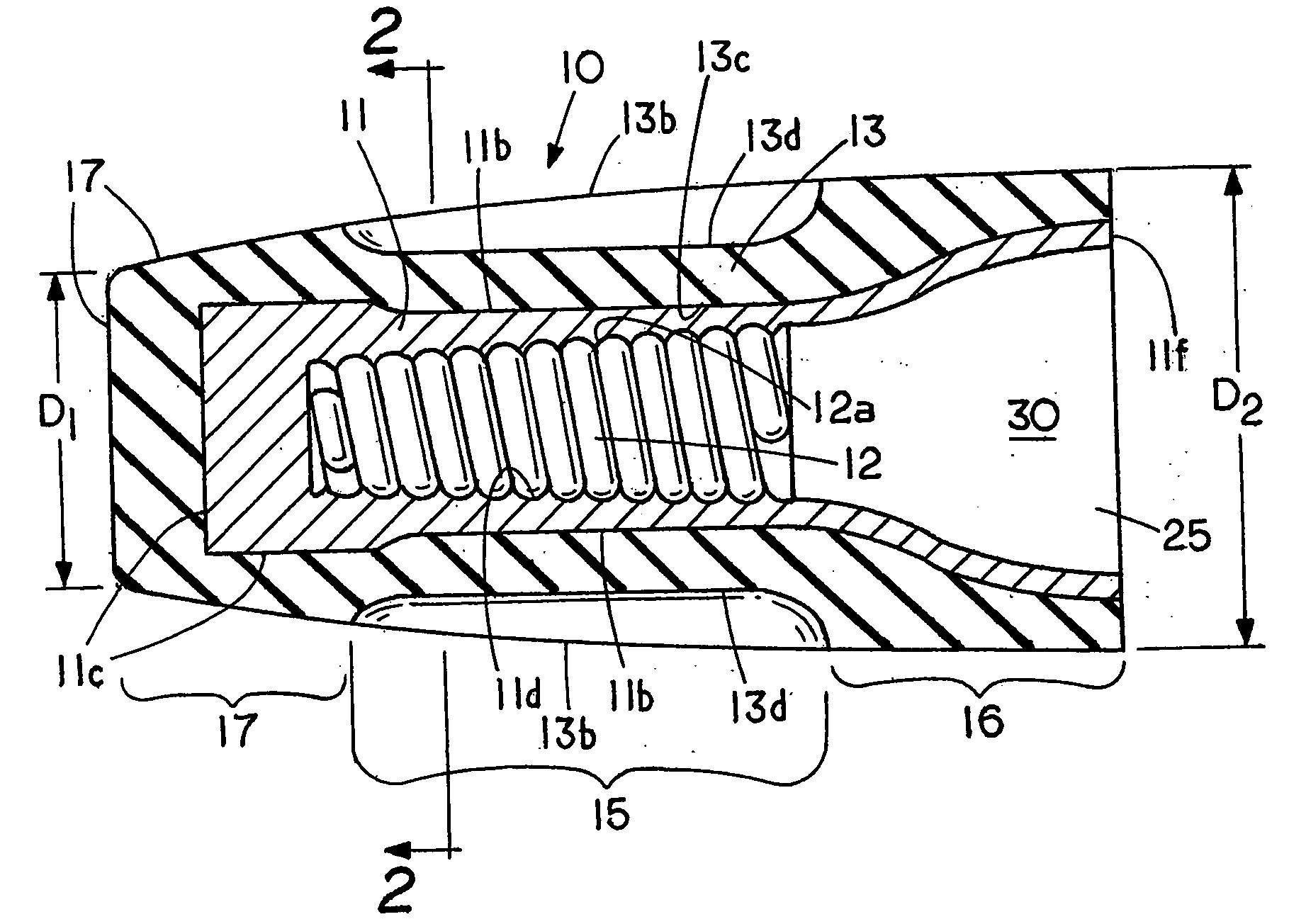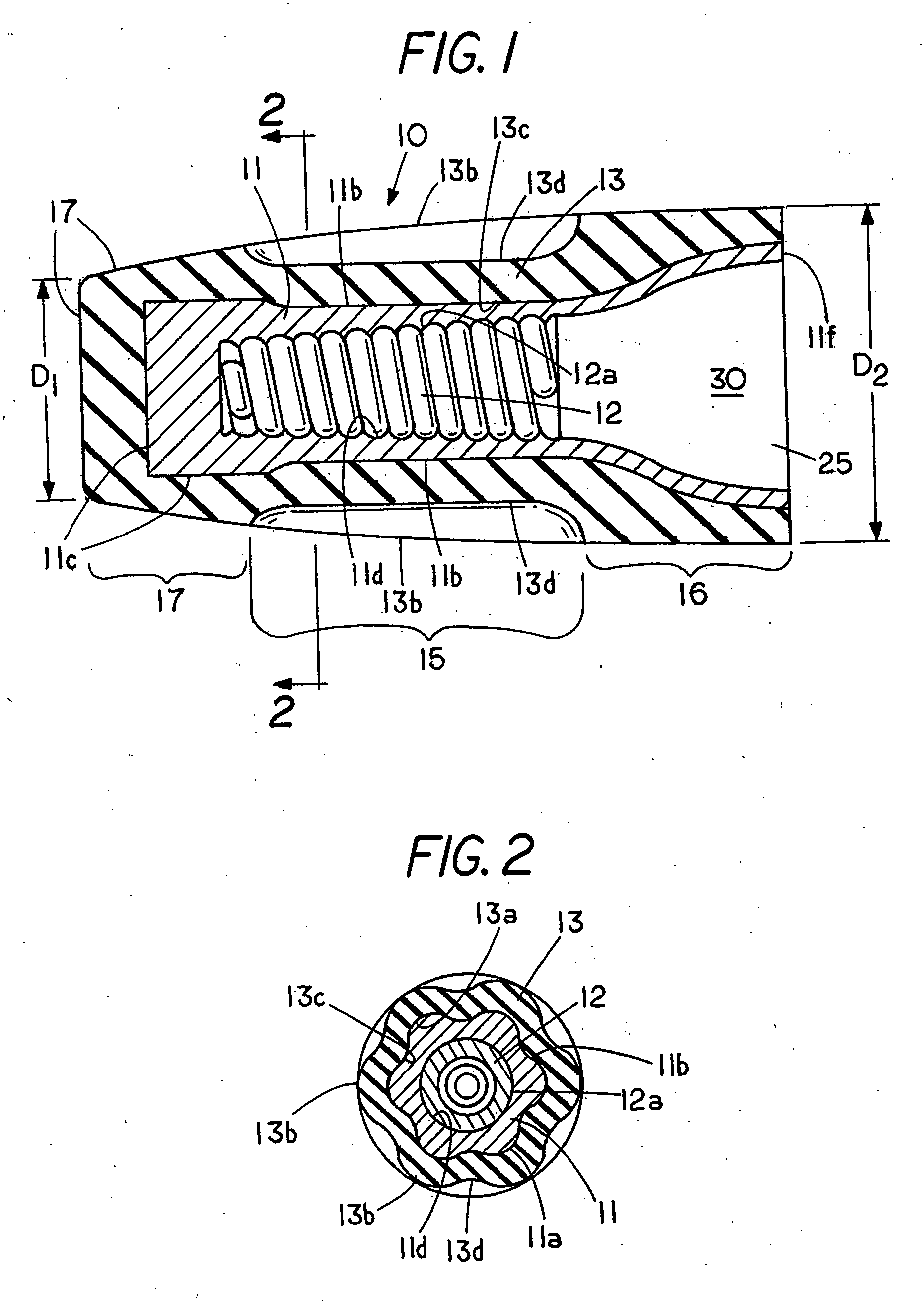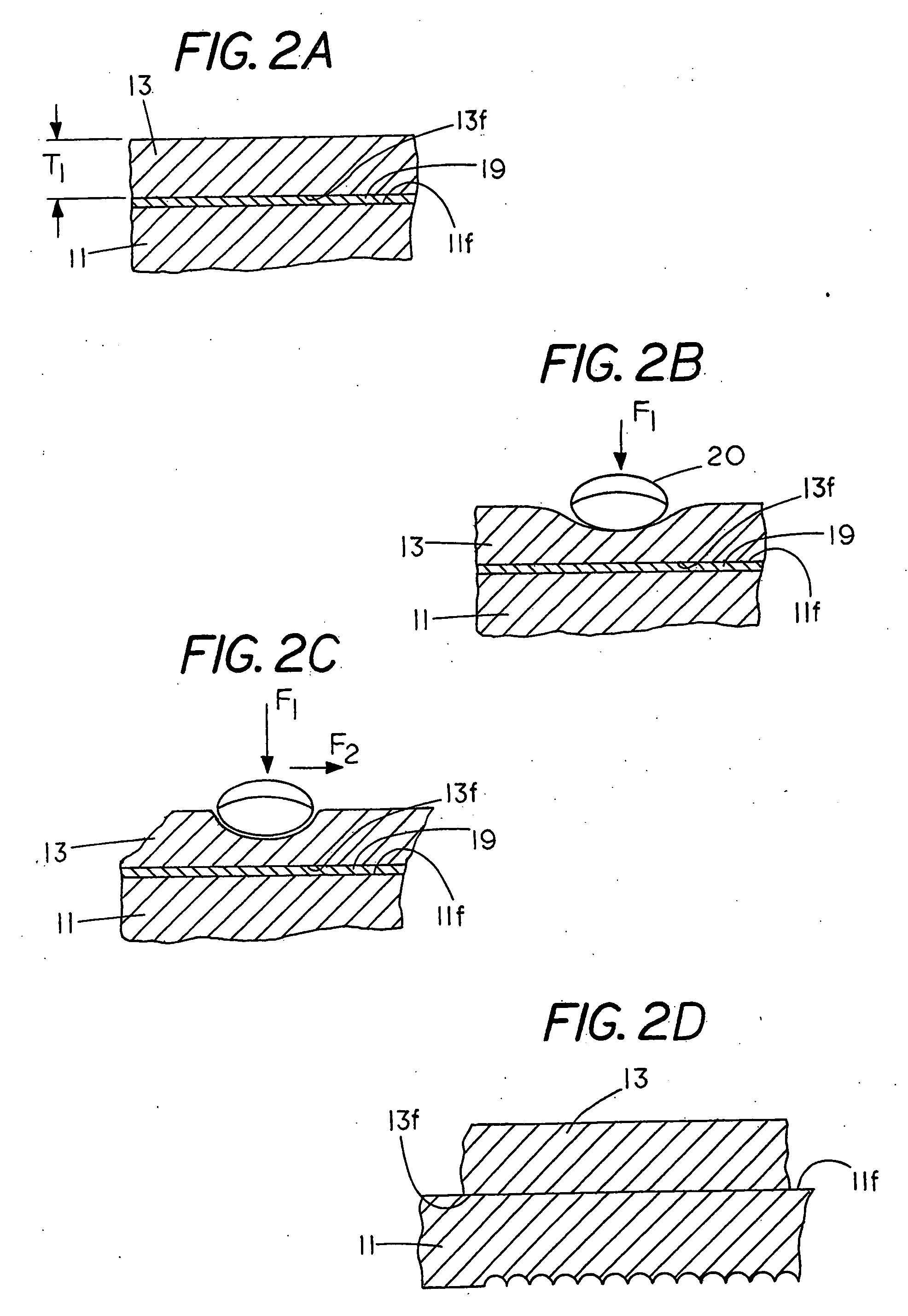Twist-on wire connector
a twist-on wire and connector technology, applied in the direction of cable junctions, connection end caps, coupling devices, etc., can solve the problems of finger pain, slippage of the shell surface, and small benefit, so as to inhibit finger and hand injury and fatigue
- Summary
- Abstract
- Description
- Claims
- Application Information
AI Technical Summary
Benefits of technology
Problems solved by technology
Method used
Image
Examples
Embodiment Construction
[0044] Referring to the drawings, FIG. 1 shows a cutaway view of a wingless, twist-on wire connector 10 having a closed end an open end for insertion of electrical wires therein and FIG. 2 shows a section view taken along lines 2-2 of FIG. 1.
[0045] Wire connector 10 includes a rigid internal shell 11 with an open end 25 and a closed end, the shell having an interior surface 11d for engagement with wire coil 12 and an overmolded soft shell or cushioned cover 13 with a closed end an open end 25. The hard shell 11 is conventionally used on the exterior of twist-on wire connectors and usually contains ribs, reliefs, grooves or wings to enhance the users grip of the twist-on wire connector. That is, to apply a twist-on wire connector the user rotates the twist-on wire connector with one hand while the wires are held firmly in the other hand. The result is that the wire ends are twisted into electrical engagement with each other in the spiral thread of the twist-on wire connector.
[0046]...
PUM
 Login to View More
Login to View More Abstract
Description
Claims
Application Information
 Login to View More
Login to View More - R&D
- Intellectual Property
- Life Sciences
- Materials
- Tech Scout
- Unparalleled Data Quality
- Higher Quality Content
- 60% Fewer Hallucinations
Browse by: Latest US Patents, China's latest patents, Technical Efficacy Thesaurus, Application Domain, Technology Topic, Popular Technical Reports.
© 2025 PatSnap. All rights reserved.Legal|Privacy policy|Modern Slavery Act Transparency Statement|Sitemap|About US| Contact US: help@patsnap.com



